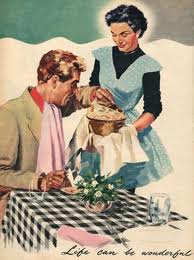After reading the essay on canonization I was prompted to consider whether or not I would place/want to include The Water Babies into the canon. For me it was not whether or not the book is lacking interest, it has more to do with the content within the book. The Water Babies promotes gender roles, racism, and social hierarchy. These are outdated concepts that should not be continually given to children.
There are some very good lessons to be obtained by a child reading The Water Babies, such as “do not be lazy because your life will not turn out the way you may have hoped” and “treat others the way you want to be treated” are two very good lessons within this story. However, racism is incredibly prevalent within the novel. The chimney sweep Tom is called a “dirty black boy” while he is still working for Grimes. This is a time when Tom is still dumb and has not learned the lessons, which will make him a more productive citizen.
Even today we still hear the instructions, “boys will be boys” and “act like a lady.” These phrases give allowances to boys for things such as being dirty, making a mess, fighting with other boys, and being loud and crazy. However, oftentimes if a young girl were to do any of the above-mentioned actions she would be told to “act like a lady.” As much as people like to think that things are equal and we do not apply the pressures of gender roles upon children still, this is not the case. We are still priming boys to be tough and for girls to be quiet, submissive housewives. This is seen in The Water Babies in several instances. Ellie is a clean, quiet, young lady who is given a task to proof herself by teaching Tom. Whilst, Tom is given the task of traveling all the way to the other end of nowhere where he encounters quite a few dangerous obstacles. The gender roles being reinforced within the story could cause the children reading this book to fit themselves into these gender roles instead of following their own personality.
The social classes are highlighted through the caste system Kingsley creates within the animals that Tom encounters. Some examples of a social hierarchy can be seen first with the salmon. Within different kinds of fish that we see the salmon are the kings of the fish and that trout are a species of fish that a salmon could be killed for if they decided to intermingle. Also, the otter mother has a higher position since she will only eat food she deems worthy of her. This promotes the idea of social classes to young children ,which causes difficulties with allowing children to be seen as worthy.
Perhaps, The Water Babies has a few good morals that young children can benefit from getting but it could also be at the cost of equality and self expression. The story is outdated, with references to things that children nowadays would not understand and with too many injustices against peoples other that the standard “white, British male.” Therefore, it may be a good thing that The Water Babies is a story that is becoming forgotten.






















